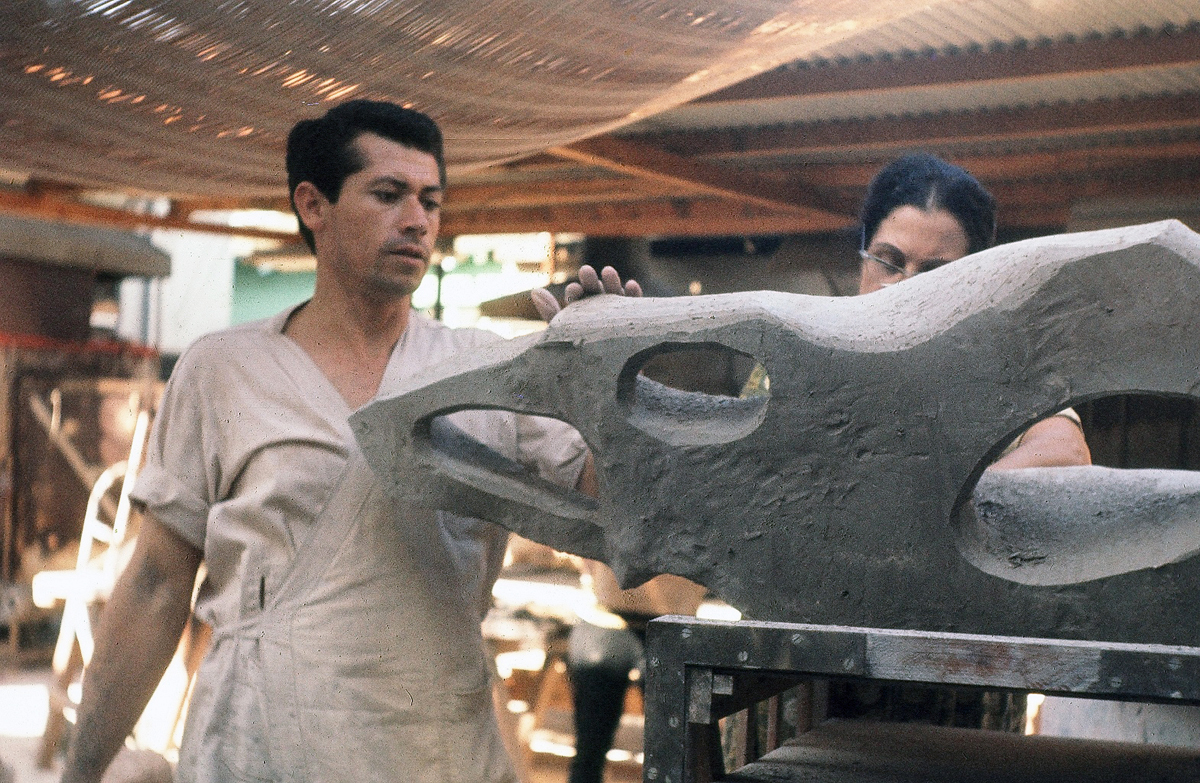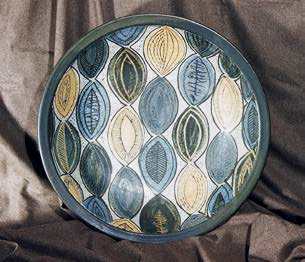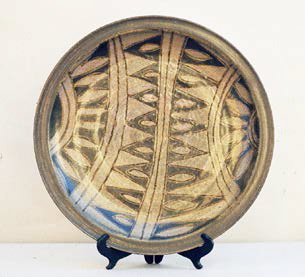Grand Guru of Clay - Page 3
 |
|
|
 |
 |
 |
 |
|
|
|
|
 |
|
|
At age 13 he crossed the border himself and moved in with an aunt in Fullerton, east of Los Angeles. His prosperous uncle ran an orange juice plant. Raul was one of two Mexican kids in town—both of whom joined the Marines in 1943.
Though he qualified as a sharpshooter, Coronel says, and served on Eniwetok and Okinawa, got a look at the Enola Gay before its famous atomic bombing mission, and visited Hiroshima and Nagasaki after the blasts, "I did not get shot at. I did not shoot at anyone. It was like an overseas vacation holiday."
After a brief pre-med stint at UC Berkeley, waiting tables at the Don the Beachcomber restaurant on Oahu (where he met and, within weeks, married his wife Lee), and a few other jobs, including teaching, he began studying ceramics at Los Angeles State College. (He got later training at the University of Southern California, and studied at several other schools.)
In 1955 Coronel used $500 in savings from teaching and from Lee's dental hygienist job to rent a ceramics studio in Venice. "It was a real speculative move on my part," he says, and came after he surveyed crafts shops to see "who made those pieces and why are people buying them?"
"I may be shy, but I am really sure of myself. The first thing I did was paint this sign in black and put 'Raul Angulo Coronel - Pottery and Textiles' in the window."
It was a great location, he says, because a four-way stop slowed people down. "They would see this display because I kept all the lights on all the time. In the morning my wife and I would go and check the window for nose prints and hand prints."
Coronel produced individual pieces—usually on commission but sometimes on spec—lines of plates, cups, bowls, wall panels, immense pots, room-sized ceramic wall reliefs, and more.
He began making ceramic wall panels, he says, because no one else was doing them. "I would check stores, and see everybody had lamps, everybody had accessories for the lamps, but nobody had anything for the walls."
He created whimsical village scenes, scenes for children's rooms—elves, abstract designs, a partridge in the pear tree for the holidays.
"I would do like 24 pieces a day," Coronel remembers. "They could be anywhere from a cup size to a bowl size, a platter, and also a few bottles, and perhaps some ashtrays. Then I would modify them and trim them, and show the guys what they were like so they could make the copies."
"As fast as I could think of something that I could use, or was needed out there that people are not doing, I would immediately do it."
Attached to the studio was a store, and when Raul was working, the store was open. Lee, who continued to work for the dentist, worked the shop at times and so did Raul.
"I'd come in with clay dripping from my hands," when customers arrived, he says. "They would understand."
The studio never employed more than six people and usually fewer. Coronel brought in a couple of partners—Brent Bennett, who began as an assistant, and graphic designer Walter Schneider—calling the firm Stoneware Designs West. Coronel remained majority owner and the designer.




